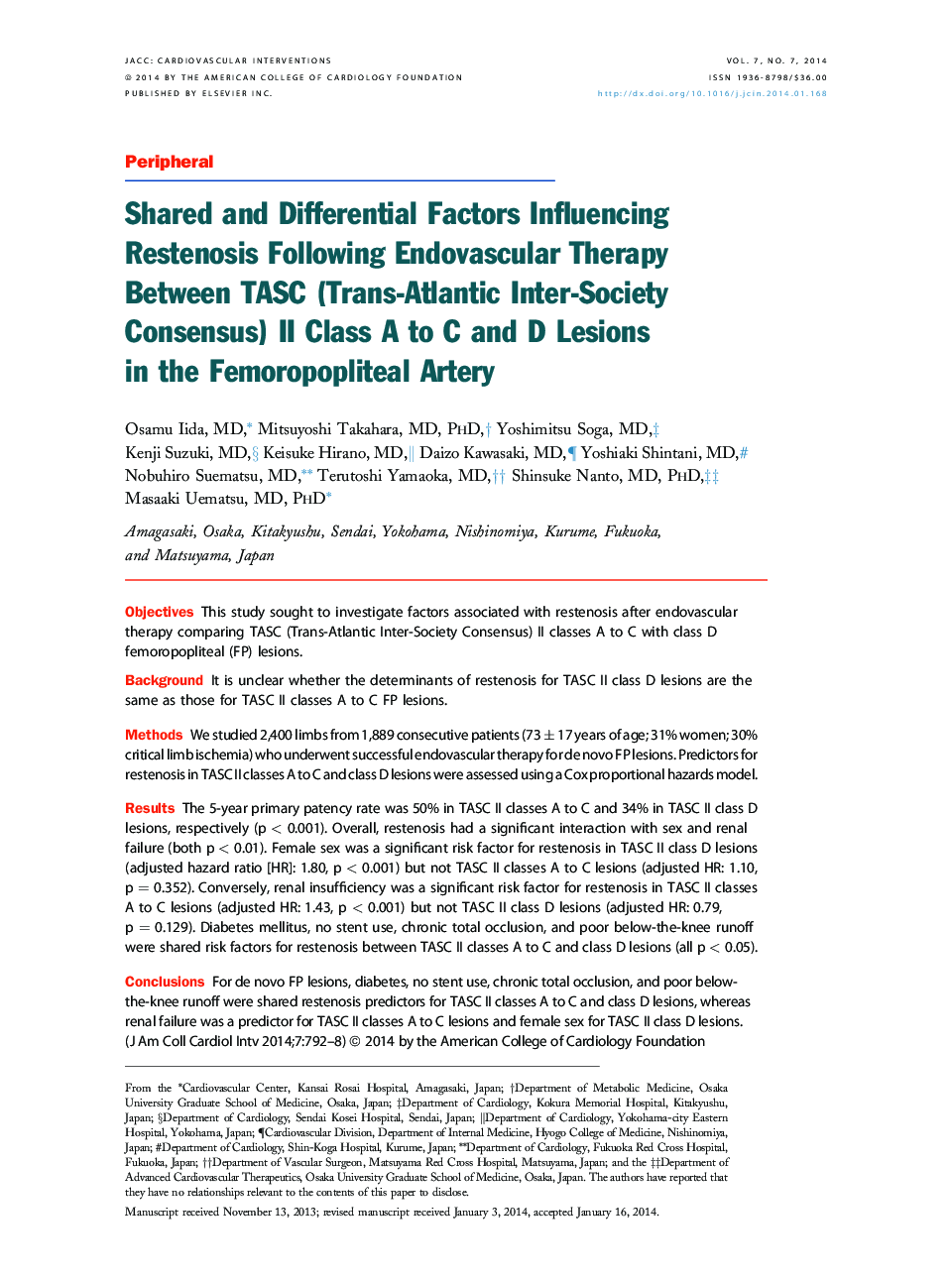| کد مقاله | کد نشریه | سال انتشار | مقاله انگلیسی | نسخه تمام متن |
|---|---|---|---|---|
| 2940103 | 1177016 | 2014 | 7 صفحه PDF | دانلود رایگان |

ObjectivesThis study sought to investigate factors associated with restenosis after endovascular therapy comparing TASC (Trans-Atlantic Inter-Society Consensus) II classes A to C with class D femoropopliteal (FP) lesions.BackgroundIt is unclear whether the determinants of restenosis for TASC II class D lesions are the same as those for TASC II classes A to C FP lesions.MethodsWe studied 2,400 limbs from 1,889 consecutive patients (73 ± 17 years of age; 31% women; 30% critical limb ischemia) who underwent successful endovascular therapy for de novo FP lesions. Predictors for restenosis in TASC II classes A to C and class D lesions were assessed using a Cox proportional hazards model.ResultsThe 5-year primary patency rate was 50% in TASC II classes A to C and 34% in TASC II class D lesions, respectively (p < 0.001). Overall, restenosis had a significant interaction with sex and renal failure (both p < 0.01). Female sex was a significant risk factor for restenosis in TASC II class D lesions (adjusted hazard ratio [HR]: 1.80, p < 0.001) but not TASC II classes A to C lesions (adjusted HR: 1.10, p = 0.352). Conversely, renal insufficiency was a significant risk factor for restenosis in TASC II classes A to C lesions (adjusted HR: 1.43, p < 0.001) but not TASC II class D lesions (adjusted HR: 0.79, p = 0.129). Diabetes mellitus, no stent use, chronic total occlusion, and poor below-the-knee runoff were shared risk factors for restenosis between TASC II classes A to C and class D lesions (all p < 0.05).ConclusionsFor de novo FP lesions, diabetes, no stent use, chronic total occlusion, and poor below-the-knee runoff were shared restenosis predictors for TASC II classes A to C and class D lesions, whereas renal failure was a predictor for TASC II classes A to C lesions and female sex for TASC II class D lesions.
Journal: JACC: Cardiovascular Interventions - Volume 7, Issue 7, July 2014, Pages 792–798